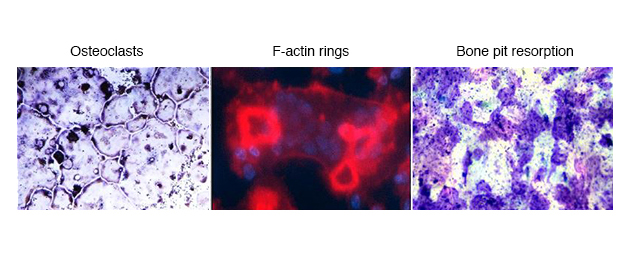Targeting Mechanisms of Postmenopausal- and Disease-Related Osteoporosis
 Targeting bone-resorbing osteoclasts for better therapeutics
Targeting bone-resorbing osteoclasts for better therapeutics
Osteoclasts become highly active during aging and postmenopausal osteoporosis. During normal homeostasis, bone resorption by osteoclasts is well balanced with bone formation by osteoblasts. Antiresorptives can inhibit osteoclasts to suppress bone resorption. Dr. Chandra's lab studies the mechanisms of novel pathways that can be targeted to suppress osteoclasts without affecting bone formation.
Bone is a dynamic organ in which minor changes in cellular functions cause severe bone deterioration. Bone mineral density changes with age and due to a loss of estrogen after menopause. These changes lead to moderately reduced bone mineral density, termed osteopenia, and severely reduced bone mineral density, resulting in osteoporosis. In these conditions, the balance between bone-forming osteoblasts and bone-resorbing osteoclasts gets disturbed, causing resorption and, ultimately, bone loss.
Dr. Chandra's Bone Injury and Repair Lab studies the mechanisms that cause uncoupling in the bone remodeling process. The goal is to target uncoupling at different stages to provide better alternatives for osteoporosis treatment.
We are working to understand the role of unique pathways in osteoclast function and bone remodeling. We're targeting those mechanisms as a treatment for early-stage osteoporosis.